Thermal mass is the ability of a material to absorb, store, and release heat. It can be used to moderate building temperatures by reducing fluctuations. Materials with relatively high thermal mass, such as stone, rammed earth, and brick, can absorb significant heat during the day and release it slowly when temperatures drop at night, reducing the need for heating and cooling systems. Properties like heat capacity, thermal conductivity, and density are all considered when assessing the thermal mass property of a material.
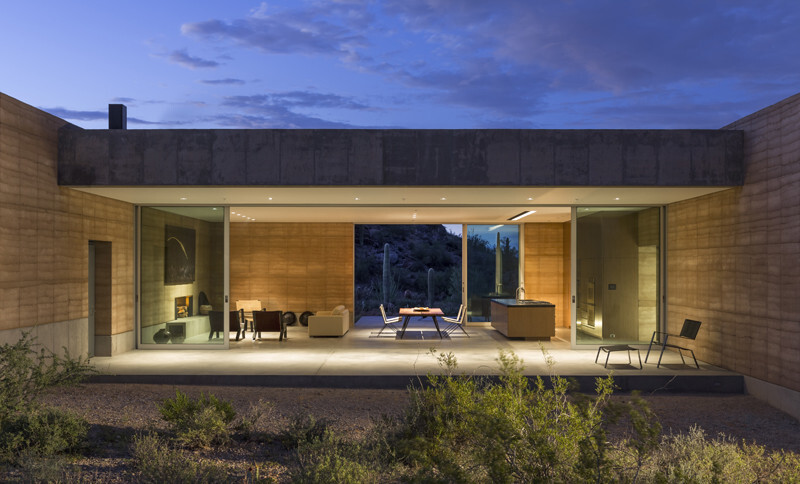
Thermal mass is a fundamental concept in passive architecture, which focuses on designing buildings that maintain comfortable indoor environments. In harsh desert environments with a tendency for drastic temperature swings, designers utilize thermal mass in order to regulate indoor temperatures. Arid environments lend themselves well to thermal mass interventions. Through strategic material selection, placement, insulation, and ventilation, designers can use walls and floor slabs in different formats with high thermal mass to contribute to energy efficiency and comfort.
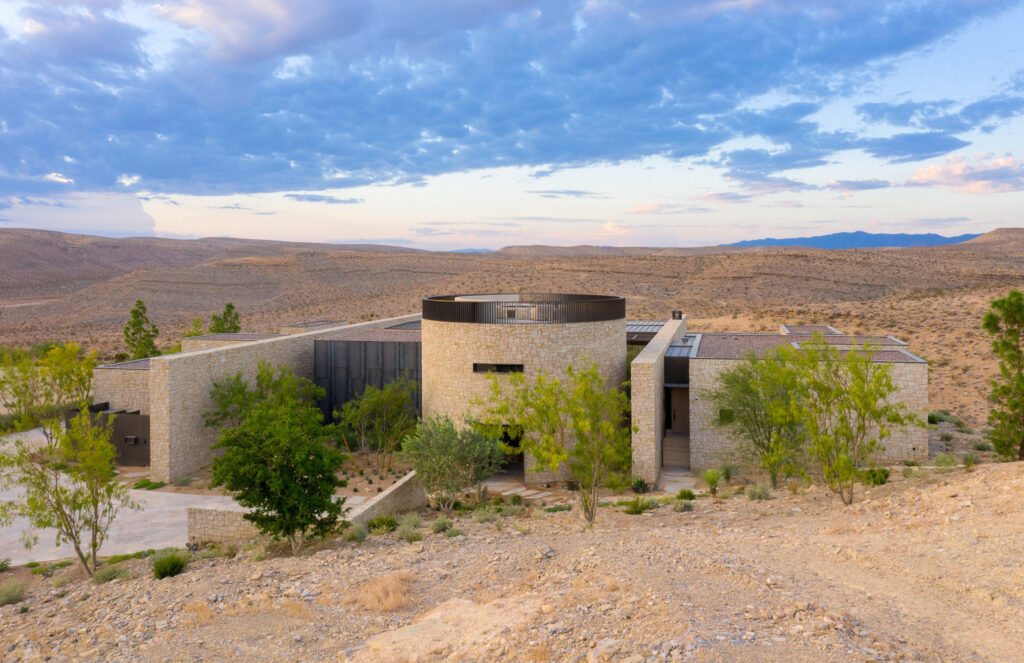 This contemporary Fort home in Nevada utilizes thermal mass to create a comfortable and energy-efficient living environment that blends with its rugged natural surroundings. The house features substantial stone walls that absorb heat during the day and release it slowly at night.
This contemporary Fort home in Nevada utilizes thermal mass to create a comfortable and energy-efficient living environment that blends with its rugged natural surroundings. The house features substantial stone walls that absorb heat during the day and release it slowly at night.
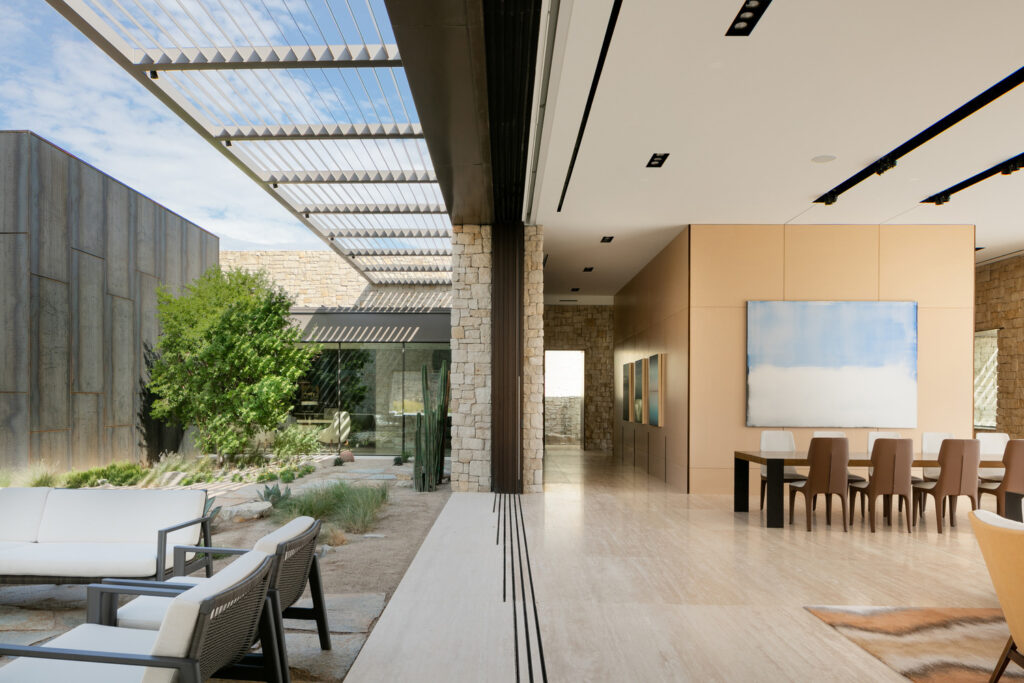 Forming the structural backbone of the home, along with a steel frame, these bulk stone walls provide a buffer against the extreme desert climate. The residence also uses travertine floors to add to the thermal mass, further stabilizing indoor temperatures by absorbing and retaining heat.
Forming the structural backbone of the home, along with a steel frame, these bulk stone walls provide a buffer against the extreme desert climate. The residence also uses travertine floors to add to the thermal mass, further stabilizing indoor temperatures by absorbing and retaining heat.
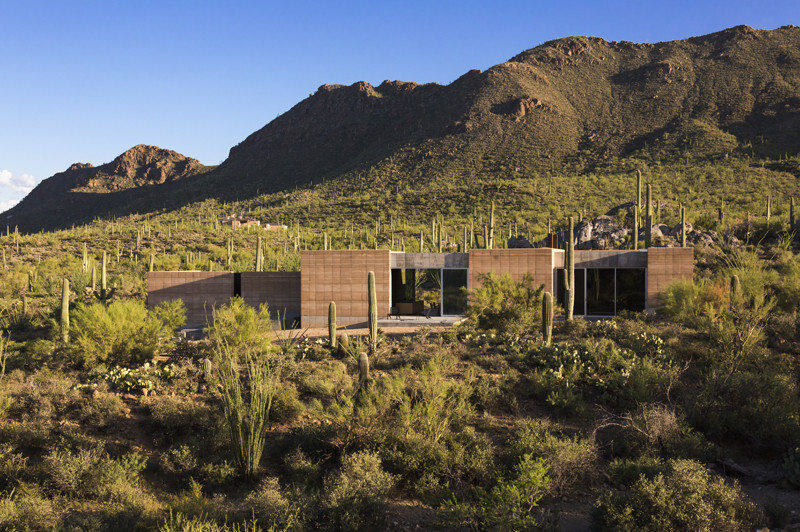
The Tucson Mountain Retreat, situated within the Sonoran Desert in Arizona, is primarily constructed from rammed earth. The material absorbs heat during the day and releases it slowly at night and is widely available in the Sonoran Desert.
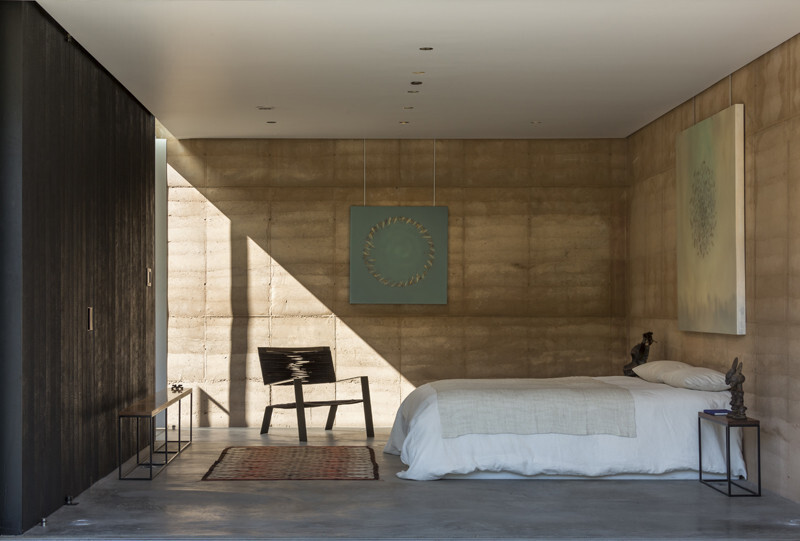
The project also combines passive architectural strategies like orientation, shading, and cross-ventilation to create a comfortable living space that cools the house during hot desert days and warms it during cooler nights.
 Located on a granite outcropping in Arizona, the Desert Courtyard House also effectively uses thermal mass properties. The construction primarily features rammed earth, involving compacting layers of soil and a small percentage of cement within wooden molds, creating dense walls that can absorb heat effectively.
Located on a granite outcropping in Arizona, the Desert Courtyard House also effectively uses thermal mass properties. The construction primarily features rammed earth, involving compacting layers of soil and a small percentage of cement within wooden molds, creating dense walls that can absorb heat effectively.
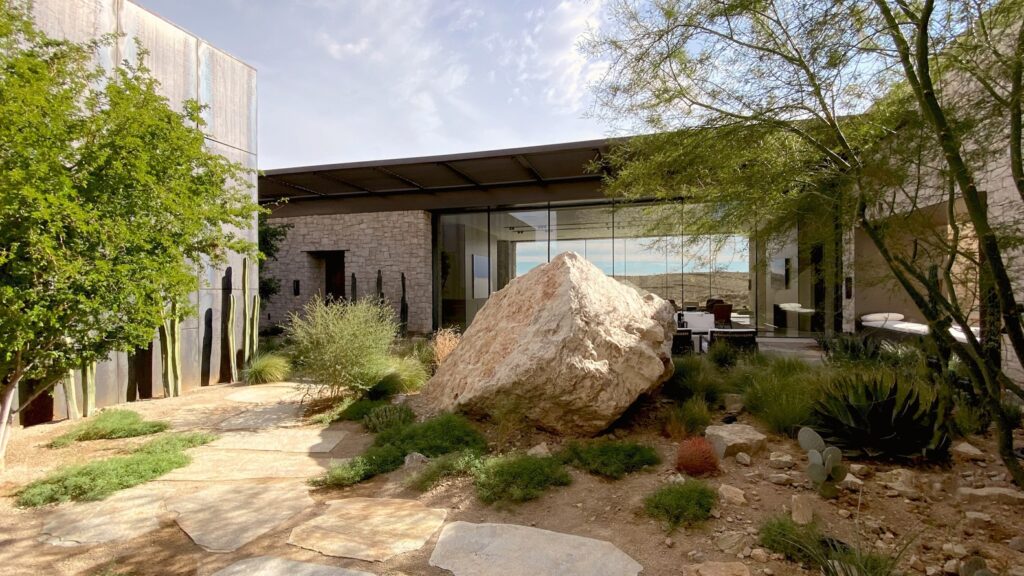 The project also features a courtyard, serving as a thermal buffer, moderating the heat absorbed by the surrounding earth walls.
The project also features a courtyard, serving as a thermal buffer, moderating the heat absorbed by the surrounding earth walls.
You can read the original article at www.archdaily.com

